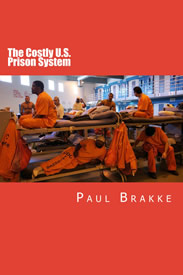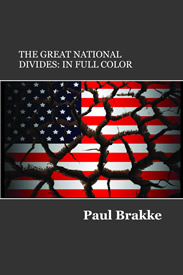
Today, racial relations between blacks and whites seem to be worse than ever, despite an increasing number of blacks moving into middle class and high income positions. Part of this racial conflict is due to the economic split in the black community, making for a growing underclass, primarily black, in the inner cities.
Much of the discrimination today has its roots in the turbulent Civil War period. Let me explain how we have gotten to the crisis in race relations we face today and what to do about it.
The Growing Segregation of Whites and Blacks After the Civil War
It wasn’t an easy life up North for blacks fleeing the Jim Crow South. When factories had to cut back or close, blacks suffered the most, since they were the first to lose work and quickly sink into poverty. In most U.S. cities, they also faced rampant segregation, because each ethnic group was most comfortable in its own homogeneous neighborhood. While blacks were undoubtedly most comfortable around other blacks, the neighborhoods where they lived became the poorest and most crime-ridden – with much of the crime due to impoverished conditions. Whites who could escaped to the suburbs, leaving the inner cities to poor blacks.
The Results of the War on Poverty
Then, a hundred years after the Civil War, President Lyndon Baines Johnson declared a War on Poverty, followed soon afterward by affirmative action programs. Both the War on Poverty and these programs were well-intentioned, but they were also subject to the law of unintended consequences. The War on Poverty resulted in a welfare system which trapped many poor blacks in a subsistence existence without sufficient incentive to improve their lot. Similarly, affirmative action provided the benefit of establishing a significant black middle class, but these blacks moved out of the inner cities, further impoverishing the black brethren they left behind, resulting in black ghettos.
Once out of the “hood”, the middle class blacks began to relate more to their own success and that of the whites around them than to the blacks left behind in the ‘hood, as happened with O.J. Simpson before his 1994 arrest. The unintended consequence was that the increasingly impoverished ‘hood became rife with crime, and more and more blacks were locked up, many for petty crimes, in the “Get Tough on Crime” pushes starting in the 1980s. An enormous number of blacks were imprisoned as a result, often with long sentences of many years for relatively minor offenses like a sharing drugs with a friend. Their incarceration further decimated the ‘hood and broke down families.
How the Criminal Justice System Contributes to the Black-White Division
 The prison statistics for black males are truly a national shame. As many as a third of all black men end up in prison at some point in their life, and this high rate of imprisonment has given the United States the dubious distinction of imprisoning more people than any other country in the world, based either on total numbers or on the percent of the population in prison or jail. Further exacerbating the problem of black males ending up without jobs or in prison is that more than two-thirds of all blacks born are raised by single moms.
The prison statistics for black males are truly a national shame. As many as a third of all black men end up in prison at some point in their life, and this high rate of imprisonment has given the United States the dubious distinction of imprisoning more people than any other country in the world, based either on total numbers or on the percent of the population in prison or jail. Further exacerbating the problem of black males ending up without jobs or in prison is that more than two-thirds of all blacks born are raised by single moms.
Young black males raised by single moms have no good male role models to guide them to living a more productive life. As a result, they drop out of school, face extremely high unemployment rates, participate in a lot of violent crime, and feel harassed by cops who believe they are appropriately responding to the high rate of crime in black neighborhoods.
No wonder blacks distrust cops, and no wonder cops distrust blacks. They co-exist in a very unstable relationship which can deteriorate rapidly in response to any incident, and frequently does.
Whites, who have largely abandoned downtown areas of many cities in their flight to the suburbs, would just as soon not know what goes on in the ‘hood, as long as it doesn’t affect them. This mix of black-police confrontation and middle class white apathy is toxic. It is as if the middle class whites inserted the police between themselves and the blacks, creating a powder keg that can blow up at any time.
Some Suggested Solutions
Is there any solution? No one solution will suffice, but several combined together might.
- More community policing. More black cops need to be recruited to help police the high crime neighborhoods where they live. All cops also need to be given special training in community interaction.
- Train cops to take less forceful steps to calm down a suspect in order to make an orderly arrest.
- To further reduce racial incidents between cops and blacks, cops should be screened for personality characteristics they might have in common with cops who have killed innocent blacks or who have shot too quickly at suspects resisting arrest. Those personality types who are too quick to respond aggressively could be assigned to desk duties or low crime neighborhoods.
- Neighborhood watches should be encouraged in the black community, at least during daytime hours.
- Convicts need to acquire skills and training in prison to survive the harsh reality of re-entry into society. Otherwise, as measured by high recidivism rates, they are likely to wind up back in prison instead of becoming productive members of society. Many good programs exist to help them learn skills for success and achieve success in legitimate jobs after they leave prison.
- These pre-release programs need to be followed up with post-prison release support programs and support groups to help ex-cons find jobs and adjust to life outside prison.
- Community members should also be encouraged to think of additional approaches that might help to reintegrate convicts back into society, as well as guide black youths to leave behind a life of crime and adopt a more productive life.
- Young blacks raised by single moms need better role models. In The Price of Justice in America, I suggested Barack Obama and Colin Powell could serve such roles, supplemented by Big Brothers who extricated themselves from the ghettos.
- Young black girls need better access to long-term contraceptives that would decrease the extremely high rate of teen pregnancies which trap single moms in the welfare system. Michelle Obama could inspire them to demand more of themselves, as could Oprah and Venus and Serena Williams.
More details on the growing divisions in the United States and what to do about them are in my book The Great National Divides.
Paul Brakke is a scientist based in the Little Rock, Arkansas area. He became interested in studying the criminal justice system when his life was turned upside down after his wife was falsely accused of aggravated assault for trying to run some kids over with her car, since the kids and some neighbors wanted her out of the neighborhood.
Eventually, they were forced to move as part of a plea agreement, since otherwise, Brakke’s wife faced a possible 16 year jail sentence if the case went to trial and she lost.
He has previously told his wife’s story in American Justice?, along with a critique of the criminal justice system. That book’s website is at americanjusticethebook.com.
He founded American Leadership Books after he began investigating the criminal justice system in more depth. Thus far, five more of his books have been published by American Leadership Books.




